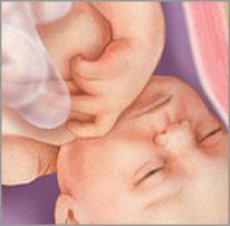Pregnancy: 37 weeks
Last reviewed: 23.04.2024

All iLive content is medically reviewed or fact checked to ensure as much factual accuracy as possible.
We have strict sourcing guidelines and only link to reputable media sites, academic research institutions and, whenever possible, medically peer reviewed studies. Note that the numbers in parentheses ([1], [2], etc.) are clickable links to these studies.
If you feel that any of our content is inaccurate, out-of-date, or otherwise questionable, please select it and press Ctrl + Enter.

How does the baby grow at 37 weeks gestation?
At 37 week of pregnancy, your baby has reached the full term. If the birth activity begins now, then the birth will pass fairly easily and quickly. Some babies still need a longer stay in the mother's womb. Therefore, if you have planned a birth with cesarean section, the doctor will appoint them for a period not earlier than 39 weeks, if there is no other medical reason, do it earlier. Your child weighs almost 3 kg, and his height is a little over 48 cm. Many babies have hair on their heads at birth, do not be surprised if they are of a different color from yours. This is the first hair, which later will change both color and structure.
Important: the development of each child is strictly individual. Our information is designed to give you an idea of the development of the fetus.
Changes in the future mother at 37 weeks gestation
Braxton-Hicks contractions can now be repeated more often and last longer than before. You can also notice an increase in the amount of vaginal discharge, a small amount of bloody mucus may indicate the approach of labor. If you develop profuse bleeding or discharge, tell your doctor immediately. Also be sure that you know the results of the tests for the content of Group B Streptococcus. If necessary or unforeseen circumstances, you will be able to remind the hospital that antibiotic therapy is necessary during childbirth.
A good night's sleep may be a big problem for you over night, so if you can rest during the day - this may be your last chance in the next time. Continue to monitor the movements of your child, and tell your doctor immediately if you notice a decrease in activity.
During sleep you can have absolutely strange and bright dreams. Experiences about childbirth and parenting can fuel an unconscious imagination.
Symptoms of childbirth
There is no way to predict the onset of labor, in fact, the body begins to "prepare" for delivery a month before them. You can be in blissful ignorance or you can notice new symptoms, as you approach the expiration date.
One week before the birth, you may notice:
- The omission of the fetus. If this is your first pregnancy, you can feel the omission of the baby a few weeks before the birth, it can also lead to a feeling of heaviness and pressure in the pelvis.
- You can notice the increasing frequency of Braxton-Hicks contractions. More frequent and intense Braxton-Hicks contractions may indicate premature birth, in which the cervix begins to unfold.
- Isolation of the mucous plug is a mucous thickening that blocks the cervical canal leading to the uterus. The cork can come out in the form of a clot or in the form of an increased amount of secretions within a few days. Mucus may contain blood.
- Rupture of membranes. Most women first begin to feel contractions, and only then notice the rupture of membranes, but in some cases, it happens the other way round. After the rupture of the membranes, the birth begins immediately. (If the contractions do not start on their own, they will be called by the doctor).
How to distinguish between preparatory fights from the beginning of labor?
Sometimes it is very difficult to distinguish false labor from an early stage of labor, the following tips will help you:
- Preparatory bouts are irregular. They differ in duration and in the interval of repetitions. Despite the fact that the early stage of labor can also begin with irregular labor, over time, they begin to recur more regularly and more often.
- With false bouts, pain is more likely to be concentrated in the lower abdomen, with labor activity - in the lower abdomen and lower back.
- Preparatory fights can pass independently, as well as when changing the position or changing the activity. Early labor contractions will progress no matter what you do.
This Week's Activity: Read the instructions for installing a child car seat. You can not bring the child home without a car seat, so do not wait until the last with its installation.


 [
[